
-
Find the right food for your pet
Take this quiz to see which food may be the best for your furry friend.
Find the right food for your pet
Take this quiz to see which food may be the best for your furry friend.
Featured products
 Adult Perfect Weight & Joint Support Chicken Recipe Dry Dog Food
Adult Perfect Weight & Joint Support Chicken Recipe Dry Dog FoodThis weight management and mobility support dog food was created with Hill’s unique understanding of the biology of overweight dogs.
Shop Now Adult 7+ No Corn, Wheat, Soy Chicken & Brown Rice Dog Food
Adult 7+ No Corn, Wheat, Soy Chicken & Brown Rice Dog FoodSupports energy level and beautiful coat in mature dogs
Shop Now Adult 7+ Perfect Digestion Chicken, Whole Oats & Brown Rice Recipe Dog Food
Adult 7+ Perfect Digestion Chicken, Whole Oats & Brown Rice Recipe Dog FoodScience Diet's breakthrough nutrition supports ultimate digestive well-being & healthy microbiome for dogs age 7+
Shop NowFeatured products
 Adult Savory Chicken Entrée Cat Food
Adult Savory Chicken Entrée Cat FoodPrecisely balanced nutrition with the delicious taste of savory minced chicken to help fuel the energy needs of cats during the prime of their life
Shop Now Perfect Weight Salmon & Vegetable Canned Cat Food
Perfect Weight Salmon & Vegetable Canned Cat FoodOver 70% of cats lost weight within 10 weeks when fed this nutrition
Shop Now Adult Perfect Digestion Chicken, Barley & Whole Oats Recipe Cat Food
Adult Perfect Digestion Chicken, Barley & Whole Oats Recipe Cat FoodScience Diet's breakthrough nutrition supports ultimate digestive well-being & healthy microbiome
Shop Now -
Dog
- Dog Tips & Articles
-
Health Category
- Weight
- Food & Environmental Sensitivities
- Urinary
- Digestive
- Joint
- Kidney
-
Life Stage
- Puppy Nutrition
- Adult Nutrition
- Senior Nutrition
Cat
- Cat Tips & Articles
-
Health Category
- Weight
- Skin & Food Sensitivities
- Urinary
- Digestive
- Kidney
-
Life Stage
- Kitten Nutrition
- Adult Nutrition
Featured articles
 Water
WaterDiscover why water is the most important nutrient for your dog or cat to live a healthy life. Find out how much water your pet should consume each day.
Read More Pet Food Storage Tips
Pet Food Storage TipsDiscover how and where to store your dry, as well as canned, dog and cat food. Learn how to find the "best before" dates on all Hill's pet food packaging.
Read More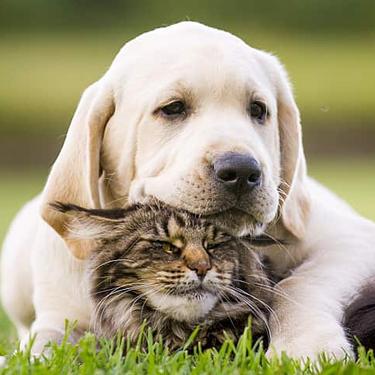 The Incredible Science Behind Your Pet's Microbiome
The Incredible Science Behind Your Pet's MicrobiomeLearn what a pet's microbiome is, how it contributes to your pet's gut & overall health, and why nutrition is important in maintaining healthy microbiomes.
Read More -
Find the right food for your pet
Find the right food for your pet


Finding a lost cat on your doorstep can be a jarring experience. You no doubt want to help, but it's not always clear what kind of help a strange cat needs. Theymost likely belong to one of three categories. Either they have a home that they wandered away from, they have been abandoned and are now a stray, or they are a feral cat that has never been socialized to humans. It's important to determine which category you're dealing with before taking any action to help. If you're in the position of helping a stray cat, keep reading to learn which actions you should take.
Is the Cat Feral?
If a cat shows up on your property, it's a good idea to observe their behavior from a safe distance before approaching to offer help. Feral cats and kittens have never been socialized to humans and might bite or scratch if you try to touch them — if you're even allowed to get that close.
While a friendly, approachable cat is likely not feral, some non-feral strays are shy and wary of strangers despite being socialized, so it's not always that easy to tell the difference. Alley Cat Allies offers a few signs to help you spot a feral cat:
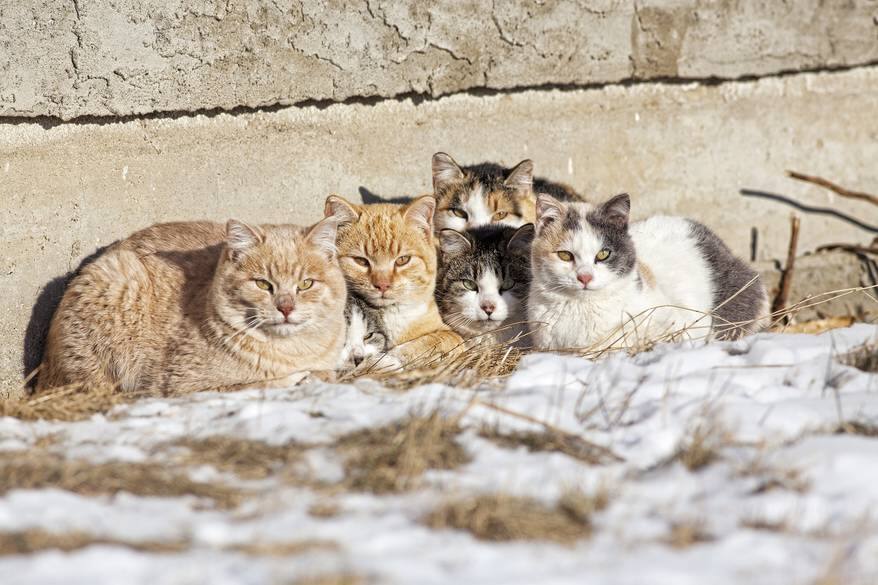
- Stray or lost cats may approach homes, cars or even people, even though they may hover at a safe distance. Feral cats, on the other hand, are more likely to run away or hide.
- Strays tend to avoid other cats, while feral cats often live in groups.
- Stray cats are likely to look at you and make eye contact, whereas feral cats tend to avoid eye contact.
- Strays are more likely to vocalize or "talk" to you. Feral cats tend to stay silent.
- Strays are primarily active during the daytime, while feral cats, though occasionally visible during the day, are more active at night.
- Strays that are used to being taken care of may have a "homeless look" about them. For example, they may be dirty or bedraggled. Feral cats are used to taking care of themselves, so they often look clean and healthy.
If you think you might be dealing with a feral cat, it's best to keep your distance.You can call your local animal control if you suspect feral cats are living near you, as they are equipped to handle these wild cats.
Is it a Lost or Stray Cat?
After finding a lost cat and determining that they are not feral and is safe to approach, the next step is to figure out whether they are indeed simply lost or if they are a stray in need of a new home. If the cat is wearing a collar with ID, it's very likely that they are lost. In this case, simply call the number listed on theID to let her owner know their cat has been found safe and sound. You can also call the veterinarian listed on the vaccination tag, who should be able to put you in contact with the cat's guardian.
Unfortunately, it's not always so simple. Many people don't bother putting a collar or tags on their cats, so the fact that these are missing doesn't necessarily mean that they are homeless. You can take them to a vet or animal shelter to have them scanned for a microchip, which would have the guardian's contact information — but the lack of a chip also doesn't necessarily mean you're dealing with an abandoned cat.
With no easy way of identifying to whom the cat belongs, the next step is to check lost and found ads. It's also a good idea to ask around the neighborhood to see if anyone is missing a cat, or if anyone has seen "lost cat" posters that describe the cat in question. Be sure to also check the lost and found on websites such as Craigslist, Facebook lost pet groups, lost pet databases such as PetAmberAlert.com and call your local animal shelters. People will often call their local shelters when a pet is lost, so there is a chance that the shelter will be able to help you reunite the cat with the owner.
If none of your searching turns up an owner, the final step is to place your own "found cat" ads. You can utilize your social networks. It could be that someone in your extended network knows where the kitty belongs. Again, calling your animal shelter to let them know that you have found what you think to be a lost cat, so they can contact you if the owner calls in. If you do not have the capacity to care for the cat while you search for the owner, make sure to call your local shelter and ask if you can bring the cat in. Never leave a cat at the door of a local shelter or fire station.


Tasty Tips
If You Have Pets
Dealing with finding a lost cat takes a considerable amount of time, and you may find yourself fostering your feline guest for several days or even weeks. If you already have pets in the home, keep the new kitty quarantined either until you locate the owner or you can take the cat to the vet for a health check and vaccinations.
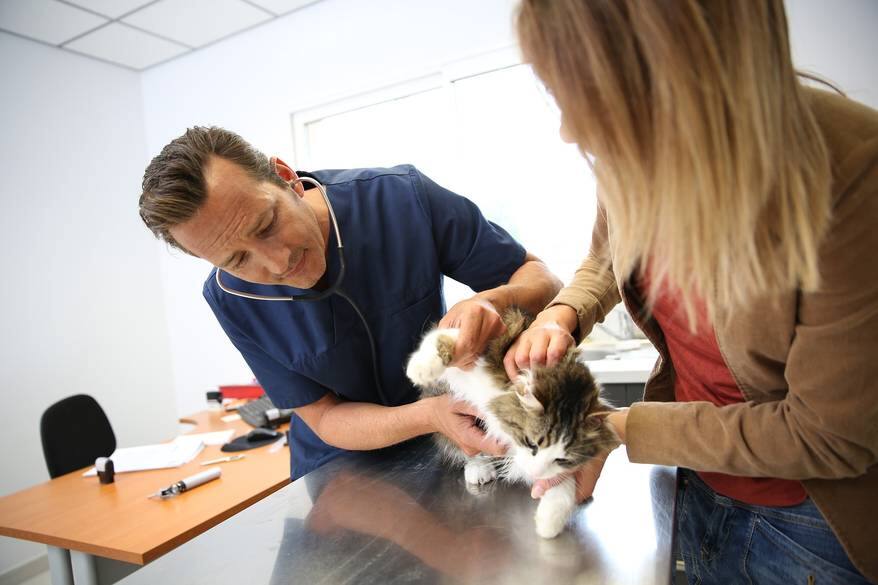
Once they get a clean bill of health, you can slowly introduce the new catto your pets. On the other hand, if you have no plans to keep them, you may decide to keep the cat segregated for the remainder of their stay with you.
Helping a Stray Cat
If you've exhausted all your resources and failed to track down an owner, it's likely that the cat has been abandoned and is in need of a new home. In this case, you have a few options. You could, of course, adopt the cat yourself. If you do, your first step, if you haven't already done so, is to take them to the vet for a health check and to schedule vaccinations as well as spaying or neutering.
If you don't plan to keep her, you'll need to find a home for her. Start by calling local pet adoption shelters to see if there are any willing to take her. In the event that a shelter won't accept the cat, Cat Care Society recommends these steps to find a new home for your stray:
- Advertise. Start by letting friends, family and co-workers know that you're looking for someone to adopt the cat. You can also try your social networks. If those avenues fail, place fliers in veterinary clinics and pet supply stores. You can also place classified ads in newspapers and online classified sites.
- Interview prospective guardians. A few questions to ask are whether they already have any pets and what kind, if those pets are vaccinated and spayed or neutered, whether there are children in the home, and if they live someplace that allows pets. If you haven't already taken care of vaccinations and spaying or neutering, ask if the prospective guardian is willing to commit to having these procedures done.
- Arrange a meeting. Allow the cat to meet the prospective guardian under your supervision to make sure they hit it off before agreeing to hand the cat over.
How to Help a Feral Cat
While feral cats can generally fend for themselves, you can make life easier for them by providing cat food and water— preferably in a location that can't be easily accessed by your own pets or kids — as well as shelter from the elements. The difficulty of helping feral cats is that they tend to multiply very quickly. These cats may carry diseases, too. The problem with feeding feral cats is that it promotes their ability to reproduce, which can lead to more cats living on the street, and because feral cats tend to roam together in groups, you could be inviting more cats to your home than you anticipated.
One option to help control the feral cat population in your neighborhood, reduce the risk of infectious diseases to your own pets, and potentially find homes for adoptable kittens is trap-neuter-return (TNR). There may be volunteering opportunities in your community to help with these efforts. TNR involves trapping feral cats and kittens, having them spayed or neutered and vaccinated, and either returning adult cats to their environment or finding homes or shelters to take in kittens.
Finding a lost cat can be quite a commitment if you decide to be a good Samaritan, but it's often worth it for the peace of mind and overall good feeling that comes with helping an animal in need. Who knows? That stray cat on your doorstep just might end up becoming a cherished companion.


Jean Marie Bauhaus is a pet parent, pet blogger, and novelist from Tulsa, Oklahoma, where she usually writes under the supervision of a lapful of fur babies.
Related products

Precisely balanced nutrition with the delicious taste of savory minced chicken to help fuel the energy needs of cats during the prime of their life

Feline Adult Perfect Weight Variety Pack

Over 70% of cats lost weight within 10 weeks when fed this nutrition

Science Diet's breakthrough nutrition supports ultimate digestive well-being & healthy microbiome
Related articles
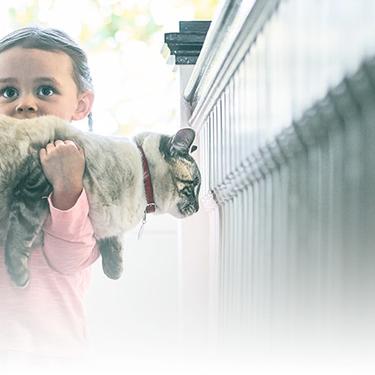
Discover how to identify cat sensitive skin and what you can do to help your cat thrive from head to paw.
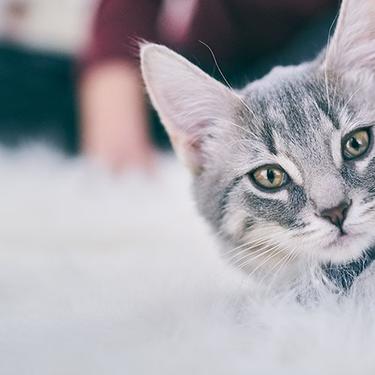
Discover the benefits of Hill's line of kitten foods and how they provide complete and balance nutrition for growing kittens.
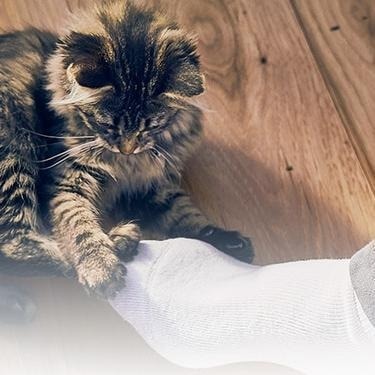
Discover which cat toys games your feline friend might like, and how they are great sources of exercise. Explore our library of articles to learn more.
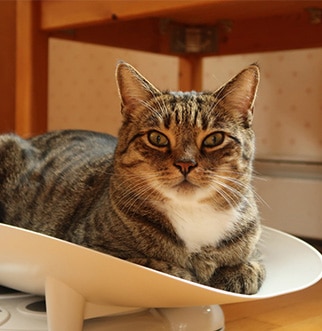
How do you get a cat to lose weight? Learn all about cat foods for weight loss, including how to choose weight control cat food and exercise tips.

Put your cat on a diet without them knowing
Our low calorie formula helps you control your cat's weight. It's packed with high-quality protein for building lean muscles, and made with purposeful ingredients for a flavorful, nutritious meal. Clinically proven antioxidants, Vitamin C+E, help promote a healthy immune system.
Put your cat on a diet without them knowing
Our low calorie formula helps you control your cat's weight. It's packed with high-quality protein for building lean muscles, and made with purposeful ingredients for a flavorful, nutritious meal. Clinically proven antioxidants, Vitamin C+E, help promote a healthy immune system.

